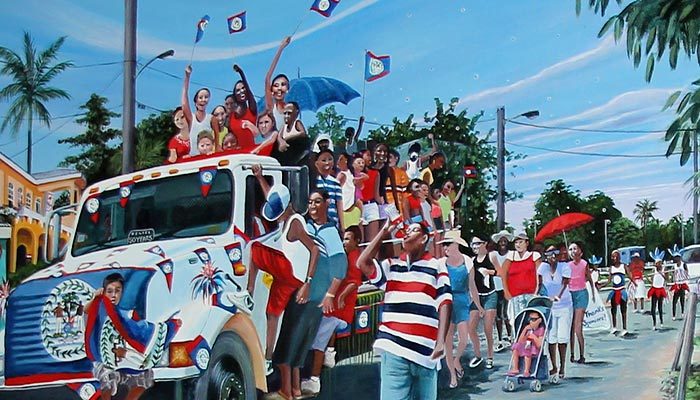St George’s Caye Day
Celebrating an Epic Moment in Belize’s History
The Battle of St George’s Caye, commemorated as a national holiday in Belize on September 10, was the defining moment in the birth of the country, bringing together a disparate group of individuals willing to risk their lives to foster a unified British Honduras and paving the road to the eventual creation of today’s Belize.
The story itself, with a small ragtag group defeating a vastly superior professional Spanish military force over a week of fighting on one of the most picturesque battlefields on earth, is one of the more colourful chapters in an area and history long associated with adventure and romance. This is, after all, the setting for The Pirates of the Caribbean and countless other tales of swashbuckling and derring-do.
Racial and class divides were put aside when the settlers and African slaves went up against a well-trained and heavily armed professional military force from Spain, going into battle completely outnumbered and out gunned with the beautiful Caribbean as a backdrop, complete with sandy islands, swaying palms and sparkling waves breaking over a stunning reef.
We always said it has all the makings of an epic film.
Living far from any seat of government or authority, Belize’s early inhabitants were hearty souls who had developed a unique frontier society with their own standards and rules. Pirates may have been accommodated; supplied with game from ashore as they hid behind the barrier reef, but the predominately English speaking settlers rejected the very idea of Spanish rule.
Word of a Spanish invasion arrived, and after a referendum to decide whether to evacuate, or stand and fight, the final vote was in favour of standing to defend the settlement.
With a Spanish fleet of 32 vessels and some 500 sailors and 2000 soldiers on the way, a defence was quickly organised with Captain John Moss in command, with the HMS Merlin and a small fleet of three sloops, the Towser, Tickler and Mermaid, each with a crew of 25 men and a compliment of light cannon ranging from one eighteen pounder, a short nine pounder, four 6 pounders and a couple of 4 pounders. There were also two schooners, the Swinger and Teazer, and eight gun-flats, each carrying one 9-pounder and 16 men.
Except for the crews of Towser and Tickler, the vessels were manned by volunteers from the “Colonial Troops”. The Baymen, for their part, had 700 fighters of all colours, descriptions and stations in life.
The Spanish fleet was spotted approaching the Belize Barrier Reef, and the battle began on September 3rd, 1798 when the Spanish attempted to pass over the shoals near St George’s Caye, but were successfully repelled.
On September 10th after a fierce two and a half hour engagement, the Spanish were defeated and fled. The final battle began beginning with the largest Spanish vessels opening fire and attacking, and ending with their flotilla in disarray, cutting their cables and retreating with the Baymen in hot pursuit until darkness made navigation through the reef too hazardous.
The Spanish continued their retreat back up to the Yucatan and never again tried to invade Belize.
The leaders of the Baymen later wrote back to England that if it were not for the valour and fighting capabilities of the many slaves who took part in the defence, with everyone fighting together under the cry of “Shoulder to Shoulder,” victory would never have been possible.
The battle of St George’s Caye has always captivated historians with its combination of brilliant tactics, sheer courage and the solidarity of the defenders. For Belizeans, it marks the moment when the people of the settlement, of all races and creeds, decided to stand “shoulder to shoulder” to defend something they all saw as worthy of fighting for.
One hundred years later, in 1898, the 10th of September was declared a Public Holiday, and today it continues to be exuberantly celebrated.
Imagine if those early Belizeans knew that almost two hundred years later their valour would be rewarded when the former colony of British Honduras, on September 21, 1981, became a fully independent, sovereign nation, respected around the world as a model of democracy and free speech as well as for its commitment to environmental sustainability.
It’s easy to understand why even today its citizens are so passionate about Belize and continue to fight to protect what makes their country so special. That reef on which their ancestors fought with its hundreds of pristine cayes, sparkling clean water and abundant marine life remains very much the way it was back in 1798, largely due to the efforts of today’s Belizeans who recognise the same thing their ancestors did – that this is a very special country that deserves protection.
